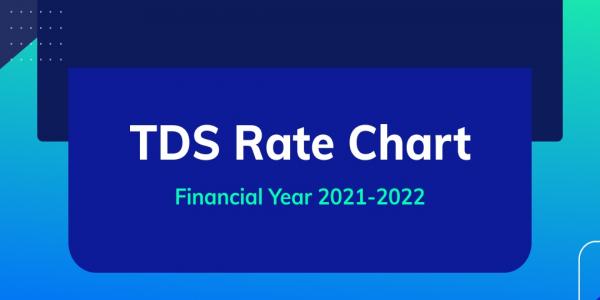TDS is applicable on various incomes such as salaries, interest received, commission received, dividends etc. However, TDS is not applicable to all incomes and persons for all transactions. There are different TDS rates prescribed by the Income-tax Act,1961 for various payments and categories of recipients. For instance, payment of redemption proceeds by a debt mutual fund scheme to a resident individual is not subject to TDS, however, for a non-resident Indian (NRI) it is subject to TDS.
TDS stands for ‘Tax Deducted at Source’ and it was introduced to collect tax at the source from where an individual’s income is generated. The government uses TDS as a tool to collect tax in order to minimise tax evasion by taxing the income (partially or wholly) of a taxpayer at the time it is generated rather than at a later date.
TDS works on the concept that every person making specified types of payments to any person shall deduct tax at the rates prescribed in the Income-tax Act at source and deposit the same into the government’s account.Here, the person making the payment is responsible for deducting the tax and depositing the same with government.
This person is known as ‘deductor’. On the other hand, the person who receives the payment after TDS is called the ‘deductee’. Form26AS is a statement which shows the amount of tax that has been deducted and deposited in a person’s name/PAN in a particular financial year.An individual can, therefore, view/check the TDS from incomes paid to him by viewing his/her Form 26AS. Each deductor is also duty bound to issue a TDS certificate certifying how much amount is deducted in the deductee’s name and deposited with the government.
In November 2021, government has introduced Annual Information Statement (AIS) and Taxpayer Information Summary (TIS). Both the documents provide record of financial transactions that the income tax department has of an individual. It shows total income received, source of income and total tax deducted on the income received.
How TDS worksThe entity making a payment (which is subject to TDS) deducts a certain percentage of the amount paid as tax and pays the balance to the recipient. The recipient also gets a certificate from the deductor which will state the amount of TDS. The deductee can claim the TDS amount as tax paid by him/her (i.e. the deductee) for the financial year in which it is deducted.The deductor is duty bound to deposit the TDS with the government.
Once deposited this amount reflects in the deductee’s Form 26AS.TDS rates on salaried and non-salaried payments for FY 2021-22
| Nature of Payment |
Section |
Threshold (Rs) |
TDS Rate (%) |
| Salaries |
192 |
Rs 2.5 lakh (for those below 60 years) |
Normal slab rate |
| Withdrawal from EPF before completion of 5 continuous year |
192A |
50000 |
10 |
| Interest on securities such as debentures etc. |
193 |
5000 |
10 |
| Dividends from companies (Effective from April 1, 2020) |
194 |
5000 |
10 |
| Interest received from banks, post office or co-operative society engaged in banking for e.g. interest from fixed deposit |
194A |
40000 (50000 in case of resident senior citizen) |
10 |
| Winning from lotteries, crosswords or any game |
194B |
10000 |
30 |
| Winning from Horse race |
194BB |
10000 |
30 |
| Payment to Contractors and sub-contractors |
194C |
30000 |
1% (Individual/HUF), 2% (Others) |
| Insurance commission |
194D |
15000 |
5%(individuals), 10% (Company) |
| Maturity of Life insurance policy those not exempted under Section 10(10D) |
194DA |
100000 |
5 |
| National Savings Schemes |
194EE |
2500 |
10 |
| Commission on sale of lottery tickets |
194G |
15000 |
5 |
| Commission/Brokerage received except for insurance commission |
194H |
15000 |
5 |
| Rent of Plant/Machinery /Equipment |
194-I(a) |
240000 |
2 |
| Rent of Immovable property |
194-I(b) |
10 |
| Transfer of certain immovable property such as land, building* |
194IA |
50 lakh |
1 |
| Payment of rent by Individual/HUF |
194IB |
50000 per month |
5 |
| Payment under Joint Development Agreements to Individual/HUF** |
194IC |
– |
10 |
| Payment of Professional Fees |
194J |
30000 |
2% (FTS, Certain royalties,) 10%(Others) |
| Dividend received from mutual funds (Effective from April 1, 2020) |
194K |
5000 |
10 |
| Payment of compensation on acquisition of certain immovable property (other than Agricultural land) by government |
194LA |
250000 |
10 |
| Payments made to professional/commission/broekrage Rs 50 lakh or more |
194M |
50 lakh |
5 |
| Cash withdrawal from bank account exceeding Rs 20 lakh or Rs 1 crore as the case maybe |
194N |
1 Crore |
2 |
| TDS on e-commerce participants (w.e.f. 01.04.2020) |
194-O |
5 lakhs |
1 |
| TDS deducted for exempting Senior citizens above 75 years from ITR filing |
194-P |
Rs 3 lakh or Rs 5 lakh (in old tax regime) or Rs 2.5 lakh (in new tax regime) |
Normal slab rate |
| Purchase of Goods |
194Q |
50 Lakh |
0.1 |
Effective from July 1, 2022, tax will be deducted on the transfer of crypto assets at the rate of 1% under section 194S of the Income-tax Act. The tax will be deducted if the transfer amount exceeds Rs 50,000 in case of specified person (Rs 10,000 in other case).As per Budget 2022 proposal, in case the payer is an Individual or HUF, having turnover from Business less than or equal to Rs 1 crore or having turnover from Profession less than or equal to Rs 50 lakh or having income under any head other than the head ‘Profits and gains of business or profession and the value of consideration transferred to a Resident with respect to virtual digital asset is less than Rs.50,000, there is no liability on such Individual/HUF to deduct tax. In any other case, the said limit is proposed to be Rs. 10,000 during the financial year.
TDS applicable above threshold
One must remember that TDS on specified transactions is deducted only when the value of payment is above the specified threshold level. No TDS will be deducted if the value does not cross the specified level.Different threshold levels are specified by the Income Tax department for different payments such as salaries, interest received etc. For example, there will be no TDS on the total interest received on FD/FDs from a single bank if it is less than Rs 40,000 in a year from that bank. For senior citizens, TDS on interest received on FD will be applicable if it crosses Rs 50,000 in a single financial year.
How to avoid TDS
If a person expects that his total income in a financial year will be below the exemption limit, he can ask the payer not to deduct TDS by submitting Form 15G/15H.While receiving payment which is subject to TDS, deductee is required to provide his PAN details to avoid tax deduction at the higher rates.
Can TDS be avoided?
TDS can be avoided by submitting Form 15G/Form 15H to the deductee.
What is current TDS rate?
TDS rate depends on the type of income received by you. Each income has different threshold and once that threshold is crossed at the TDS rate specified in the Income-tax Act.
Can TDS be refunded?
TDS that has been deducted can be claimed as refund provided your tax liability for financial year is lower than the tax deducted. To claim TDS refund, you are required to file income tax return.




